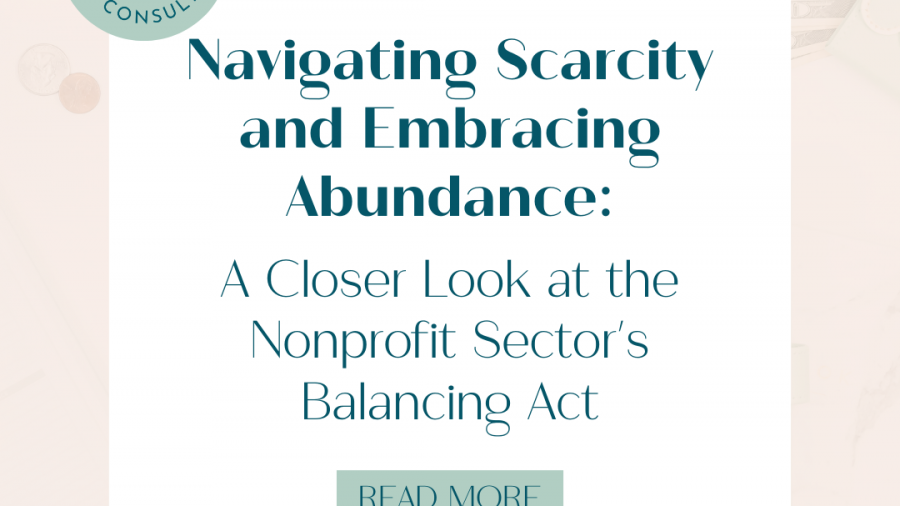If we were having coffee together today (well, tea for me!), I’d tell you that I’m training to run a marathon right now. It’s my first road race of any sort in nearly a decade – I completed 7 marathons in my 20s and replaced running with multiple IVF treatments, 2 pregnancies, 2 births, raising two little girls, and building a business
My Second Grade Failure
When I was in second grade, I memorized all fifty states, in alphabetical order in a day, thanks to the catchy song, Fifty Nifty United States. #iykyk
Because I was an 8-year-old overachiever, I boasted to my teacher that I would also memorize all (at that time) 41 presidents in order and that I would recite them to her the next day, giving me roughly 18 hours to accomplish my self-imposed challenge
Monthly Finance Habits for Better Numbers in 2022
Monthly finance habits aren’t just about looking at the numbers – they’re also about changing behaviors to proactively make smarter decisions that will ultimately affect your bottom line! You should know what you made, spent and saved every single month so you can understand how your business is doing.
Because here’s the #truth:
There is such a thing as a bad surprise, especially when it comes to your business finances.
Imagine…
Every month, you’re feeling better and better about your business’s progress.
You’re making more sales than the previous month and even started growing your subscriber list!
But then it happens: A surprise that ruins everything.
You get slapped with a problematic charge or lose out on some additional revenue because of an oversight in billing. The news weighs heavily on your shoulders. How could this possibly happen? Everything was going so well!
Was it an oversight because of poor forecasting, with you not accounting for this possible charge?
Perhaps you fell short in some area of your business? Or maybe the competition was more aggressive than you thought they would be?
Things like this happen in business, but there’s one thing you can always do to keep your financial outlook clear:
Make your goals a monthly habit.
Not quarterly.
Not annually.
MONTHLY.
If you want to stay on top of your business finances, then you need to keep an eye on how much cash you have in the bank EVERY MONTH.
If you want to stay ahead of your taxes, then you need to make sure you are tracking how much money your business made EVERY MONTH.
If you want to stay on top of your bills, etc., then you need to make sure that sales are forecasted EVERY SINGLE MONTH (preferably before the end of the month).
It’s easy to get sidetracked with so many responsibilities, so proper planning is vital to keep your business running smoothly.
Click here to learn more about how you can start designing your own monthly finance routine.
Making your financial goals part of your monthly habit means doing the following:
You can take control of your business finances by implementing good + consistent monthly finance habits. And it’s not as hard as you think! Here are 3 monthly habits that you can start practicing today.
1. Do your bookkeeping.
Updating your books should be done at the end of every month or even weekly, if you’re a solopreneur. Review your bank statements and reconcile them. Make sure the numbers add up!
You can read more about how to do better bookkeeping here: How to Improve Your Bookkeeping in Three Steps
2. Review your Profit & Loss statement and key metrics.
A monthly P&L review will help you make sure your income is growing and that you’re on track to achieving your financial goals.
Here’s a simple way of doing it:
- Take a look at the numbers for last month.
- Is it higher or lower than what was forecasted?
- If they’re higher, then great! This means that your business is making more money than anticipated.
- If those numbers are lower, though…it could mean that projections were off or that something unexpected happened (e.g., a client backed out from a project).
In either case, this would be an opportunity to dig into the details and find out where things really went wrong so you can do better next month.
Check out this podcast episode where I talk about what goes on behind-the-scenes of a CFO meeting, what’s a P&L statement, and how measuring this metric is key to better forecasts: https://100degreesconsulting.com/episode-34/
3. Don’t forget to update your projections for the rest of the year.
Forecasting is every entrepreneur’s best friend. That’s why you need to make sure your numbers are forecasted every single month!
Doing so will help you figure out how much cash you need to have in the bank NEXT MONTH before everything else comes up (like taxes). We usually do this BEFORE the end of every month.
If you’re having trouble with this concept, start SUPER small – maybe use 2-3 months’ worth of expenses as a benchmark. Then grow that number slowly over time until you find something that feels comfortable for your business. That way, you not only prepare for them, but also help ensure your bank account has enough cash to cover even surprise expenses.
Questions to ask yourself when forecasting:
- How much can you spend next month?
- 2 months from now?
- 3 months from now?
- What are the specific expenses that need to be accounted for BEFORE they come up?
It all comes down to this: If you don’t plan ahead and make your financial goals a MONTHLY HABIT, then you won’t achieve them no matter how big or small they are.
3 BONUS TIPS FOR BETTER MONTHLY FINANCE HABITS:
Set financial goals that are measurable and timely. If you want to reach $500k in sales by year-end, then break down how many sales per month it will take to get there.
Set realistic expectations, so you don’t sabotage your progress. Let’s say you want to grow your clientele by 10% each month. If that doesn’t seem possible, then adjust the goal accordingly: 5%, 7%, etc.
Perform an inventory count to make sure you don’t run out of any supplies, you have enough hours to complete a project, etc.
Conclusion:
Proper planning is necessary to keep things running smoothly behind-the-scenes.
In order for you to achieve your goals, have a monthly finance habit that includes:
- Doing your bookkeeping.
- Reviewing your Profit & Loss statement and key metrics.
- Updating your projections for the rest of the year.
By working these three things into YOUR monthly routine ahead of time, they’ll become second nature. Before long, instead of feeling stressed about it all, you’ll know what is coming each month so there’s no “surprise!” when it comes to your business’s numbers.
How to Build Good Money Habits That Stick
I get asked this question a lot… “Stephanie, how do you make good money habits stick?”
The truth is, our brain cannot differentiate a good habit from a bad one, and this is why it’s hard to break long-standing habits.
For example, if you’ve been so used to NOT doing your books until the last minute, then chances are you’re going to keep repeating this same pattern.
But this is not to say that we have to stay stuck in this cycle and put up with habits that no longer serve us!
As with anything you want to change, the first step is to acknowledge your patterns, and understand where they come from. Once you understand the root of your pattern, you can start shifting to something else that works better for you.
So if you’re someone who’s not a huge fan of math or numbers, think about when did this feeling first show up? What created it? And then let that guide you to create a new money mindset for yourself.
Here are some helpful tips on how to break old habits and develop good money habits instead:
-
Make them easy
Something that is difficult to achieve rarely sticks. The best way to create a habit? Decide how you want to feel and take steps towards getting there, little by little. It doesn’t have to be a huge lifestyle overhaul.
Everything doesn’t need to get done immediately. Focus on ease and start with one, manageable step at a time, like just coding your transactions in QuickBooks once a week. Even the smallest of good habits will make you feel good when it’s done!
-
Reward yourself
Rewards are awesome for reinforcing new habits! Try giving yourself a small reward for your efforts each day – maybe take yourself out for a nice meal after crushing your to-do list, or give yourself an hour to read in the evening when you’ve finished your day’s work.
Make that reward enticing enough to get you through the initial hard work – like including that course you’ve been eyeing in your financial plan for the year!
-
Turn your goals into habits
The secret to achieving goals is assimilating them into your routine, that way it’s easier to break down that big goal into little steps, and you can create momentum more sustainably.
For example:
- Intentionally go for a walk every day after work – it’s something your brain will automatically make you want to do, instead of making you feel guilty about not exercising.
- If your goal is to be more intentional with your spending, set a reminder in your calendar to check your bank balance each morning before you open your email.
-
Buddy up
The best way to reinforce good habits is by surrounding yourself with other people who will hold you accountable for your new behaviors. This means people who likely already emulate the behavior you are trying to form. (Ahem, we have just the solution for you in the Purpose & Profit Collective!)
You see, our brains are not thrilled when we suddenly change things – it’s the same with the people around you. If they are not ready or not fully supportive of the change you’re making, they may inadvertently sabotage your attempts at sticking to your new habit.
So, surrounding yourself with a supportive circle of colleagues, friends, coaches, and mentors will help a lot!
-
Track your progress
We’re visual creatures and we like to see our progress. This is why we tend to only see the end result and not acknowledge how far we’ve come. Track your progress so you can see your achievements, even if they seem small right now.
My favorite way to track progress is in our Profit Playbook – you enter your forecast for the year, then your actuals each month so you can easily compare how you did to what you planned.
-
Make them relevant
Trying to create good money habits when we’re not even clear on what we value and prioritize is like starting work on a project without any understanding of the objectives.
Start by getting clear on your values, priorities and your ideal business and lifestyle. Then you can build your financial plan and habits to suit them. What are some common pitfalls that get in the way of you achieving what you want?
-
Plan for failure
Let’s be honest, even the most well-meaning plans tend to go awry. When you do slip up – like getting behind on your bookkeeping or not using your forecast every month – don’t beat yourself up over it. Make a slight course correction and get right back on track.
It will take some time for your new habits to feel natural, but don’t give up before you’ve given yourself the chance to make them stick!
-
Get comfortable with discomfort
Change can be scary and will likely cause some sort of internal resistance – that’s totally normal!
After all, your brain is programmed for survival which translates into always trying to stay on top of things.
This is why “you should always do what you are afraid of” doesn’t work. Our minds are quick to notice when things are out of the ordinary, so doing something new will immediately trigger stress or discomfort.
So instead, start small and gain your confidence before tackling bigger things.
Conclusion:
Building good money habits that stick requires you to be thoughtful and intentional about what new behaviors you want to develop.
Identify your goals, set up a plan to track and monitor your progress and form supportive relationships with like-minded individuals. When you do slip up or it feels like an uphill battle, remember – slow and steady wins the race!
How to Pick Your Power Word(s) of The Year
Is it too late to talk about power words a.k.a your Word(s) of The Year? I want us to talk about this for a hot minute… and if you haven’t picked your power word for the year yet, maybe this can even help you with that!
Now, I don’t know about you, but I love picking out my power words because they act as special reminders that help us become more focused on what we need to power up for the year.
For example, my word(s) of the year are Intentional Ease.
That’s because, as much as I love taking action and doing #allthethings, I am also well-aware that I need to be intentional about what needs to be done, and do so in a way that does not cause unnecessary stress for me, my team, and our clients.
So, not only do my power words help me narrow my focus and get more strategic about the tasks that I want to tackle, but it also allows me to be more present in how I live my life and run my business.
“But I haven’t quite picked my Word/s of The Year yet, Stephanie! How do I even choose when there are sooo many things I want to manifest in 2022?”
Worry not, my friend!
Here are 4 actionable tips to pick AND use your power word/s:
1. Ask yourself, “If you had to pick just ONE word that can help guide and inspire your life in all areas, what would it be?”
I’m not asking you to identify an action step or a word that is meant to be achieved completely this year. It doesn’t have to sound cool or poetic either. Rather, it’s about a word or an intention that you want to weave into your life over the next 12 months.
For example, mine is Intentional Ease and I want to bring ease into every area of my life – be it in mindset, health, relationships and business!
2. Grab a dictionary and identify power words that help you tap into your Power Mood!
Having power words doesn’t mean that they will play out exactly how you imagined. So, in order to prevent power words from draining your energy, it’s best to use power words that play into what I like to call “power moods.”
There are tons of power moods out there! Here’s a few examples to give you some perspective: ambitious, happy, relaxed, unfazed, and unapologetic.
You can even make a list of words that have unique meanings to you!
3. Reflect on what transpired last year and see if there are any recurring themes that you want to incorporate into this year.
If there’s something great that went on in the previous year that you want to bring into the next, then there’s no harm in choosing words associated with the power word you chose in the previous year.
For example, in 2019, my power word was BUILD. Then in 2020, my power word was EXPANSION.
4. Create a visual reminder of your power word.
The magic of your power word(s) lies in its ability to act as a daily reminder of what you want to become and how you want your year to go.
One way to keep your power word top of mind is by creating a vision board with your power word written somewhere on big, bold letters! I personally like to use Post-its and my journal as a tangible and visual reminder, but as with anything, you should go for what works for you.
So, whether it’s a poster, a visionboard, or even a journal – just make it tangible and easy to access!
I hope you give power words a try and let’s power up together!
IRS 1099 Forms: How To Get Ahead
Who even thinks about IRS 1099 forms this early in the year? Like, don’t we have until the end of January to send our form 1099s?
In an ideal scenario, everybody associated with your company fills out & files their tax forms responsibly, and nobody experiences any crazy tax issues… but believe me, things can go horribly wrong real quick when you don’t prep ahead.
One common horror story is when a contractor goes MIA around the holidays (or even worse when January comes rolling in). Oh! The scrambling that goes into catching up on tax reports after the holiday season… not fun!
So, you really want to start preparing yourself and your organization much earlier (hint: throughout the year), so that you can catch any issues quickly… Because let’s be real for a second, nobody wants to go through a tax season dumpster fire!
[nervous laugh]
Right?
So, what is a 1099 form?
What other types of 1099 forms are out there?
There are actually a lot of other tax forms that fall in the 1099 category, but these are the common ones that most taxpayers use:
-
1099-MISC
This form cover income that falls outside the clause of the other 1099 forms. Money received from prizes and awards are examples of non-employment income. For those of you who fall under the self-employed category, it’s important to remember that you are responsible for paying the taxes you owe even if you don’t get the form from your employer. If the company submits a 1099 form to the IRS, but you don’t receive it for some reason, the IRS will send you a letter (actually, a bill!) saying you owe taxes on the income. Please note that the letter may not arrive in a timely manner.
- 1099-B
The 1099-B is a form that brokers must use when they sell your stock. It includes the sales date, the purchase price of each security sold, and the proceeds from each sale in order to calculate any capital gains or losses you incurred! - 1099-DIV
If you own stock or other securities and receive over $10 in distributions, such as dividends, then this is a must. This includes any type of distribution that was paid on your stocks including capital gain distributions, nontaxable distributes from liquidation sales. - 1099-G
One of the many important forms that you may need to fill out is a 1099-G. This form helps to report information about unemployment compensation, state and local income tax refunds, agricultural payments or taxable grants, etc. - 1099-INT
Financial institutions (e.g. banks, brokerage firms, insurance companies, mortgage companies, credit unions, etc.) must provide this form if they pay the user more than $10 in interest during the year. - 1099-K
The 1099-k form must be filed by companies that made over 200 transactions with an annual gross revenue of greater than $20,000 through third-party payment processors like Google Checkout, PayPal, or Stripe. - 1099-R.
A 1099-R is the form filed when you get a distribution from your retirement plan. This includes IRS, Roth IRA, and 401(k) plans such as an employer-sponsored account which lets you save for retirement with pre-taxed money.
Why do independent contractors need a 1099 form?
An independent contractor counts as someone who is self-employed. That’s because when you enter a contract with an independent contractor to fill a specific role or complete a specific task, they can set their own hours, use their own tools, and even cater to multiple clients or businesses. Since contractors are considered self-employed, you (the business owner) or the (company) do not withhold taxes from their paychecks, because the contractor is solely responsible for paying their own taxes and providing their own benefits.
If a taxpayer hasn’t received the expected 1099 for income earned—even if the business didn’t file the 1099 form—the taxpayer might be able to report it under miscellaneous income. However, it’s best to contact a tax professional to determine the correct way to file for your particular tax situation.
What is the difference between a 1099-MISC form and a W-2 tax form?
1099s and W-2s are tax forms that help report different incomes.
1099-MISC, for instance, is typically used to report payments made to independent contractors (who cover their own employment taxes).
A W-2 form, on the other hand, is used for employees (whose employer withholds payroll taxes from their earnings). Businesses must issue 1099s to any payee (other than a corporation) who receives at least $600 during the year.
Who is exempt from 1099s?
Exemptions are a unique and often confusing part of the 1099 system. This can be frustrating for accountants who spend hours filling out tax documents but give relief to smaller businesses that cannot afford to hire an accountant or fill out paperwork themselves.
Exempt entities from Form 1099 issuance include any individual, organization, company or charity with income below $600 per year; however certain states may have different requirements which will override federal guidelines. It is best to consult a tax expert like a CPA to make sure that your organization is in compliance with tax laws.
Not sure “what’s the difference between a CPA, CFO, CFP?” Then THIS QUIZ is a MUST! In just three minutes, I’ll help you figure out exactly which finance pro you need, no acronyms included!
When is the 1099 tax form deadline for submission?
The deadline is typically January 31st of every year. You can check the official IRS website for more information on when and how to file your tax forms.
What happens if you don’t submit your 1099 IRS tax form?
What’s the worst that can happen if you work on your tax forms at the last minute? Weeeeell… you might inadvertently miss the cutoff and get a tax or an IRS audit notice.
Non-filing of 1099s to contractors is considered a violation of IRS regulations on information returns. Those who fail to comply can be penalized with fines or imprisonment. So, waiting too long to file your 1099s can be a costly mistake. Penalties can range from $50-280 per form, with the maximum penalty reaching up to 1 million dollars in industry fines!
3 Easy tips to get ahead of the tax season and be a rockstar CEO:
- Make a list of every contractor you’ve paid $600 or more this year to date. (Pro tip: QuickBooks Expenses By Vendor Summary report is super helpful!)
- Make sure you have their W9 on file – ask any contractors for the form if you’re missing theirs. (Pro tip: If you use Gusto to pay your contractors, this is all done for you!)
- Keep all W9s in one place (Google Drive, Dropbox, etc) – you will need them in January!
- Bonus: Repeat this process again in early January to capture any new contractors or ones who’ve hit the $600 threshold in the second part of the year.
P.S. Need help with strategizing for next year’s tax season? We are not a CPA firm and do not file personal or business taxes, but we do know of several trusted CPAs and we’d be happy to make an introduction. We do file the Form 990 for nonprofits and know that form like the back of our hands, so feel free to send your questions through our contact form and let’s connect!
3 ways to ensure a smooth-as-butter audit
Are you soaking in the summer sun as much as I am? Here at 100 Degrees, I’m splitting my time between supporting clients and taking as many Zoom meetings as possible outdoors. The weather here in Buffalo is only nice for so long, so I’ve got to take advantage of that sunshine!
Lots of our clients have audits going on right now, and all of this audit work can be a major source of stress for nonprofit leaders. There are a lot of questions, a lot of panicked moments looking for that one missing contract, and tons of uncertainty as to whether or not you’ll “pass”.
But I’ve learned a few things after supporting dozens of audits over the years and want to share how to drastically improve efficiencies and reduce time spent on your audit.
If you don’t yet have an audit, STICK WITH ME! These are best practices you can use to free up time and brain space to focus on your mission and ensure you’re ready for any future audit.
Ready? Here are my secrets to a smooth-as-butter audit!
1. An organized, cloud-based document storage system halves prep time. Many audit firms use online file sharing systems, where they have clearly labeled folders for each item requested, so you can just drag and drop files into each one. This has virtually eliminated all back-and-forth email and helped us to speed up the time to prepare and submit documents. And to make your own preparation as quick as possible, start from day one with an online folder system in Google Drive or Dropbox – create a folder for each month and store all timesheets, receipts, bank statements, reconciliations, etc within that folder for easy reference later!
2. Quarterly reviews throughout the year dramatically decrease prep time. If you’ve ever undergone an audit, you probably know the hot topics and past issues for your organization. Common issues I’ve seen are around cash management and grant restrictions, so I suggest you do a mini internal audit of those hot issues each quarter. One client recently did this, completely solved their issues, and wiped the comment from the management letter!
3. The audit is a team effort, not just a task for the finance team. The audit timeline and goals should be shared across the organization because development, leadership, the board, and programs may all get pulled in at some point. Communicate early and often to get the whole team on board.
What questions do you have for me about the audit? Just click Reply and I’d be happy to answer!
PS – Want more info on how to prepare for a stress-free audit? Check out this article >>> https://100degreesconsulting.com/stressfreeaudit/
Four Tips To Manage Your Email
Do you remember the days when email was exciting? When you’d hear that ding and get excited for a new client or that juicy newsletter from someone you admire? Well, if that once joyful “You’ve Got Mail” feeling has been replaced by email inbox dread, the latest episode of The 100 Degrees of Entrepreneurship Podcast is definitely for you.
Seeing emails pile up can bring on a great deal of anxiety. It can make you feel like you’re constantly behind and you can end the workday with more emails unread than when the day began. But putting productivity on pause is simply not an option when you’re running your business.
But having a plan and a system you use each day is the best way to tackle your inbox with confidence.
In Episode 11 of The 100 Degrees of Entrepreneurship Podcast, we’re talking about managing your email, and here are my four key tips to managing your email inbox:
Tip #1: Unsubscribe to End The Noise
From promo emails to sale notifications things can get pretty crowded. And if you’re living with a personal email and a business email, it can feel like whack-a-mole throughout the day. My best suggestion: but otherwise, get rid of them. If you’re busy and not buying, just save your absolute favorites and ditch the rest.
Trust me, you won’t miss the clutter. And if you miss something you can always resubscribe later. No worries!
Tip #2: Only Check Your Inbox When You Can Respond
Whether it’s off-hours, you’re out with your kids, or you’re in the zone on your latest project, there are times when it’s just going to stress you out to check your inbox.
And that’s okay.
My suggestion here is that you consciously decide that you’ll check your email at a particular time each day. If that’s not how you roll, then I’d encourage you to decide you’ll only check your email when you can respond to it. This skips the anxiety or the “writing the reply in my head” feeling you get when you feel the need to respond right away.
Multitasking and answering emails can lead to miscommunication or missed opportunities so the decision to check your email when you’re focused on that specific task is the way to go.
Plus, you get to show up more fully in whatever you’re doing which is a big impact booster for sure!
Tip #3: Batch Answer Similar Emails
Want an easy way to stay focused when writing or replying to emails?
Try this trick: Go through your email and answer or write emails that are related in some way.
This may mean responding to all emails from clients at once and then moving on to emails from team members and then responding to potential leads.
When you do this you’ll eliminate chunks of your email box at once, build momentum, and feel the progress you’re making.
And, you’ll find it easier to write when you’re dealing with the same audience or subject matter. So you may discover that this makes you an email reply superstar who gets more done in less time just by focusing more effectively.
Tip #4: Use Folders And Filters
Not everything in your email box needs your attention. So, using folders and filters is a great way to make delegation a breeze.
If you get an email that someone on your team needs or should see you can have those emails filtered over to them or create a folder where everything for that team member can live when they’re ready to dive into the inbox.
*Bonus Tool Tip: Schedule emails with Boomerang
I think we’ll all agree that healthy boundaries around your time are essential. But there might be some late nights and weekends where you are checking or answering emails.
One way to maintain your time-related boundaries when those instances occur is to use Boomerang. It’s a plug-in that allows you to schedule emails to be sent at a different time or to have an email you received boomerang back to you at a later date so you don’t forget about it.
As an entrepreneur, you’re not always living a 9-5 life but this tool can help you maintain boundaries as if you are. And those healthy boundaries can really help everyone from you to your clients to your team feel comfortable and confident as they interact with you.
I can’t wait to celebrate all of your Inbox Zero accomplishments!
P.S. In case you missed it, here’s a quick review of the latest podcast episodes!
Episode 8: How Data Can Double Your Income and Not Your Workload with Jennifer Grayeb
Jennifer Grayeb is the CEO of The Nimble Co, a consulting group focused on helping online business owners better understand their numbers so they can make data-driven and profit-generating marketing decisions.
Jennifer and I talked about how to skip vanity metrics and use data to make more money and better decisions in your business.
Episode 9: 4 Strategies to Build a Sustainable Business
In Episode 9 I’m sharing four of my go-to strategies for building a business for the long haul. These strategies are ones that my clients and I use to grow our impact and our bottom lines every day and they’re things you can implement in your business right now.
Episode 10: Powerful Mindset Shifts to Bring More Abundance Into Your Life with Kari Elizabeth Enge
Kari Elizabeth Enge Kari Elizabeth Enge is the founder and editor in chief of Rank & File Magazine, a publication that shares authentic, vulnerable advice on building a social impact business. She’s also a coach for purpose-driven entrepreneurs. Rank & File Magazine has featured notable thought leaders and entrepreneurs such as Simon Sinek, Jessica Honegger, Liz Forkin Bohannon, Caitlin Crosby, and more.
In our conversation, we explored the brain trash we all need to take out to grow as people and as business owners. Her guidance offered practical tips for making these shifts so you can make a real impact in the world around you.
Launching Soon: 100 Degrees of Entrepreneurship Podcast
I had this little idea in the back of my mind.
Sometimes when I’d be in the car alone, I’d practice an intro. “Hi, I’m Stephanie! Welcome to my podcast!”
I’d dream of how I’d interview guests. “Tell me the story of your business journey.”
Then one day, late last year, I decided now is the time and it all came together. Equipment, production, marketing, content – let’s just say it was a learning curve.
I am so thrilled to let you know that…
100 Degrees of Entrepreneurship Podcast
Launches on March 1st!
The show is a mix of solo and interview episodes where I chat with inspiring business owners to share their journey and experiences where they pushed outside their comfort zones to create impact on the world.
The first three episodes will drop on March 1st and you’ll be able to listen on iTunes, Spotify, and Google.
- In Episode 1, I share my personal story – how a failed wannabe lawyer turned nonprofit worker built a business serving hundreds of leaders around the globe.
- In Episode 2, I chat with Jessica Rasdall, a speaking expert who has turned her mess into her message.
- In Episode 3, we blow your mind by explaining the difference between a bookkeeper, accountant, and CFO and what you’re missing without one of these critical roles.
This podcast is my heart and my dream and I’m equally terrified and over-the-moon excited to launch it into the world.
Stay tuned for an email on March 1st to let you know it’s live!
New Podcast Episodes Drop Each Week.






















